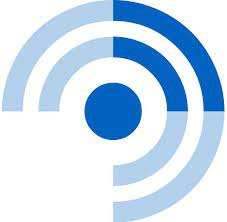
Initial drilling conducted on the HCK Project site revealed rich lithium deposits beneath the surface. One drill hole in particular, known as MWOG0002, reached a depth of 174.6 meters and uncovered a 6.9-meter section of lithium-bearing rock.
Within this section, a higher concentration was found, an impressive 3.2% lithium oxide, which is considered high-grade in the industry. The geological team also found thick sections of pegmatite rock, known to host lithium, with some layers measuring up to 80 meters in thickness.
This exploration only covered two of the twelve areas identified as potential lithium sites on the 2,750-hectare license in southern Rwanda. The fact that such promising results have already been achieved in such a small portion of the site has generated strong excitement about what may be found in the remaining zones.
In response to these early findings; Rio Tinto, which also operates in Rwanda, has confirmed that it will exercise its Stage 1 earn-in rights under the joint venture agreement. This means, the company will now own a 51% stake in the exploration license.
Moreover, Rio Tinto plans to invest further and can earn up to a 75% share by spending $7.5 million over the next three years. As part of this next phase, Aterian Plc will receive a $100,000 cash payment, and the two companies will continue to jointly manage the exploration process.
In a statement released on July 10, 2025, Simon Rollason, CEO of Aterian Plc, expressed enthusiasm about both the results and the partnership.
He emphasised that although the work is still in early stages, the thickness of the pegmatite layers and the quality of the lithium discovered so far are very encouraging.
'While further work is required to fully assess the project's scale and continuity, these early indications provide a strong foundation to build upon as we advance our exploration activities in Rwanda,' Rollason noted.
The broader exploration effort began in August 2023 and included several phases of mapping, geochemical sampling, and geophysical surveys.
Drilling only recently began as a way to test whether early surface findings translated into deeper mineral deposits.
Aterian and Rio Tinto plan to release more updates as exploration continues. A detailed technical review is already underway to determine the best path forward, and decisions about the next phase of work are expected by the end of 2025.
Lithium was first reported in Rwanda in 2020. That same year, its global market value began to rise sharply. The price per ton increased from $44,090 in 2022 to $61,520 in 2023.
In August 2023, exploration efforts were intensified through an agreement signed between Aterian PLC, RIO Tinto Mining and Exploration Ltd, and Kinunga Mining Ltd.
Lithium is a valuable mineral used in the production of various technologies, including batteries for phones, computers, cameras, and more.
Before 2020, few people recognised the value of lithium, and its price was relatively low. In December 2020, one kilogram of lithium cost around $9 (about 9,000 Rwandan Francs), up from $20.5 per kilogram in January 2018.
Lithium prices dropped in 2020 due to an oversupply, compounded by the COVID-19 pandemic.
However, 2021 was a breakthrough year for lithium traders, as prices soared by over 600%. By April 2021, the price reached $78,000 (over 78 million Rwandan Francs) per ton.
This price surge was driven largely by the increased production of electric vehicles, which require large, long-lasting batteries made from lithium.
In 2021 alone, 6.6 million electric vehicles were sold globally, double the number sold in 2020.
Experts in the mineral trade predict lithium will continue to be in high demand, as electric vehicle production continues to rise. By 2030, it is expected that more than 26 million electric vehicles will have been sold.
Currently, the leading exporters of lithium include Chile, China, the Netherlands, South Korea, Germany, and Belgium.

Théophile Niyitegeka
Source : https://en.igihe.com/news/article/high-grade-lithium-discovered-in-rwanda
